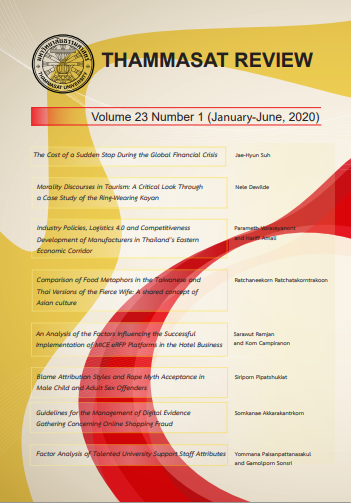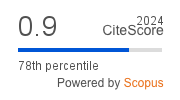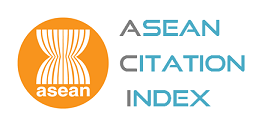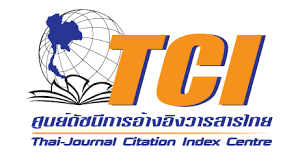Comparison of Food Metaphors in the Taiwanese and Thai Versions of the Fierce Wife: A Shared Concept of Asian Culture
Keywords:
Comparison of metaphor, The Fierce Wife, Food metaphor, Cultural concept, Media-languageAbstract
The study described in this article aims to compare and analyze the characteristics and meaning of food metaphors in the Taiwanese and Thai versions of The Fierce Wife, as well as analyze the relationship between food metaphors and cultural concepts. This research found that food metaphors in the two versions of The Fierce Wife can be divided into two groups. First are shared food metaphors: dumpling as family; cake as a mode of life; the verb “to eat” connotes having sex, and; mistress is a flavorful dish, while wife is a tasteless dish. These shared metaphors indicate that “family is food,” reflecting that food and family are the heart of Asian life. Second are metaphors that only appear in the Taiwanese or Thai version. For the Taiwanese version, these include candy as a symbol of hope and steak as the perfect man desired by every woman. For the Thai version, the metaphors include, among others, lukchup representing beautiful appearance and mind, and selecting some ingredients in a dish is equivalent to selecting someone as a partner or acknowledging someone as a family member. Food metaphors in both versions of The Fierce Wife are closely related to the plot by which the use of metaphors is associated with the two messages of the drama: first, both husband and wife play a significant role in maintaining their family, and; second, hope and courage in oneself are critical factors to overcome obstacles. The use of food as a metaphor is an important element that indicates that television dramas have a role not only to entertain, but also to educate the audience. Additionally, food metaphors in the two versions of The Fierce Wife can be consider as “media language” representing myths regarding women in Asian culture.
Downloads
Published
How to Cite
Issue
Section
License
The opinions and ideas expressed in all submissions published in Thammasat Review are solely that of the author(s) and do not necessarily reflect that of the editors or the editorial board.
The copyright of all articles including all written content and illustrations belong to Thammasat Review. Any individuals or organisation wishing to publish, reproduce and distribute a particular manuscript must seek permission from the journal first.








